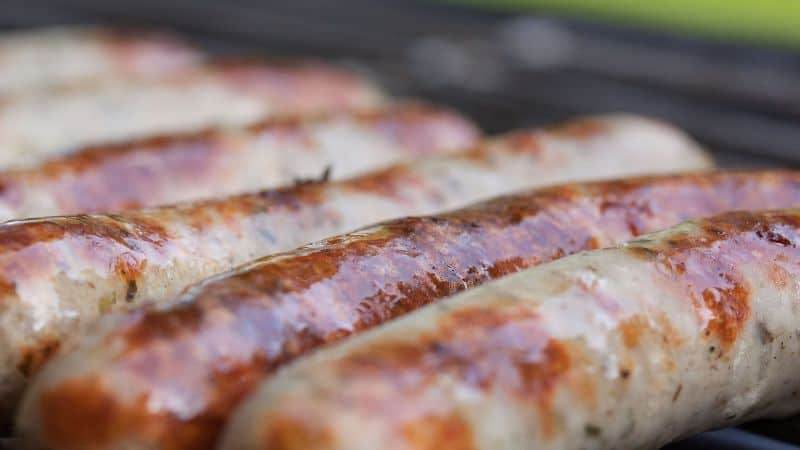When lovers of spicy food visit Europe, they often comment on how bland the food is compared to the food you find on other continents. The lack of
Spicy food isn’t prevalent in Europe because the climate is not conducive to growing hot peppers and traditional European food doesn’t contain much
In this article, we’ll take a look at a few reasons why spicy food isn’t prevalent in Europe.
Geography
Most parts of Europe experience a temperate climate, which leads to cold winters and mild summers. These climatic conditions are ideal for growing specific crops, like potatoes, wheat, rapeseed, and various herbs. However, the European climate isn’t conducive to growing chili peppers, black pepper, and cumin, the main ingredients in spicy foods.
Here are some of the most commonly-grown herbs in Europe:
- Sage
- Basil
- Bay leaves
- Juniper
- Dill
- Coriander
- Oregano
- Rosemary
- Thyme
While these herbs have earthy, citrusy, slightly bitter, and subtle peppery flavors that add depth to food, they aren’t spicy.
When Europeans first began growing these herbs, they used them to create exciting dishes, which are still eaten today. These traditional dishes may not be spicy, but they’re full of interesting flavors and aromas. Some examples include:
- British shepherd’s pie
- French coq au vin
- German bratwurst
- Bulgarian banitsa
- Norwegian lapskaus

Transportation Issues
Before the 15th century, few Europeans ventured out of the continent due to a lack of transportation. However, in the early 15th century shipbuilders created fully-rigged ships which were able to sail long distances.
When Europeans first reached places like South and Central America, Asia, and Africa, they discovered a wide range of new spices, including chilies, turmeric, and cinnamon. They brought bags of dried spices back to Europe, but since these ingredients were new, locals didn’t know how to cook with them.
Additionally, it took several months to sail back to Europe and it’s likely that by the time the explorers reached European shores, the
Food Storage Conditions
Before refrigerators were invented, Europeans would buy fresh food daily and pickle or smoke any leftovers. They could store perishable food outdoors during winter, and the icy temperatures would keep the food cold.
With their hotter climates and warm year-round temperatures, it was more challenging for South Americans or Asians to store food. When they began adding chili peppers to food, they noticed that the food took longer to spoil, and eating older spicy food didn’t make people ill.
It is believed that South Americans and Asians continued to season their food with hot peppers due to their antimicrobial and antiviral properties. This practice eventually became commonplace and a part of the traditional curries, chili dishes, and sauces we know and love today.
Europeans Created Spicy Foods Differently
When most people think of spicy food, they think of dishes such as Sichuan hot pot, jerk chicken, or vindaloo curry. Instead of using japaneño peppers or hot sauce, Europeans traditionally used other herbs to create their own version of spicy food.
Some traditional ingredients used by Europeans use to make “spicy dishes” include:
- English mustard. English mustard has a pungent, fiery, bitter, and musky taste that pairs well with roast beef and steaks.
- Horseradish. With its potent, earthy taste, you experience most of horseradish’s heat through your nose. It makes an excellent accompaniment to jacket potatoes, grilled chicken, or ham. In place of serving wasabi, many modern sushi restaurants use chopped horseradish and green food coloring and guests are none the wiser.
- Black peppercorns. Black peppercorns are a common ingredient in pepper sauce for steaks or ground up as seasoning for potatoes, fish, and chicken.
Things Are Changing
Europe may have a long history of delicious non-spicy food, but things have changed over the last few decades. Most European countries today are home to large immigrant communities who have introduced spicy food that’s now commonplace across Europe.
For instance, the United Kingdom has a large Indian population, and chicken curry is considered a national dish due to its popularization by the excellent Indian restaurants located here.
Similarly, the Netherlands has a sizable Malaysian population, and you can find flavorful Malaysian curries in many Dutch restaurants.
Can Europeans Handle Spicy Food?
Now that we know why spicy food isn’t prevalent in Europe, is it possible that one of the reasons could be that Europeans can’t handle
Europeans can handle spicy food just like any other human being, but they aren’t used to eating it. When you don’t eat spicy food regularly your tolerance for
Once you get used to eating spicy food, your tolerance for spice increases. Of course, you should gradually build this tolerance so your digestion isn’t adversely affected.
Here are some interesting ways to build your tolerance to spicy food:
- Eat tiny amounts of spicy food regularly. Consuming too much
spice at once will overwhelm your taste buds and cause symptoms like sweating, redness, and a feeling like your mouth is on fire. Try adding tiny amounts of hot sauce or chilies to your food, and do it often to increase your tolerance level. - Only increase your spicy food intake when you’re ready. Don’t be ashamed to admit that you can’t handle a lot of spiciness in your food. Building your tolerance level takes time, and you should only increase your intake when you feel you can handle it.
- Enjoy the process. Spicy food is meant to be enjoyed and not suffered through. If you’re not enjoying the process, you won’t be motivated to continue.
Conclusion
Traditional European food isn’t spicy because European climate and soil conditions aren’t conducive to growing hot peppers. Spicy food was only introduced to Europe in the last five centuries, when better ships were invented. As such,
Europeans have different ways of adding
- Black peppercorns
- Horseradish
- English mustard
Thankfully things are changing, and with the world becoming a global village, immigrants have introduced delicious spicy food to Europe.
Sources
- National Library of Medicine: Antimicrobial and Anti-Virulence Activity of Capsaicin Against Erythromycin-Resistant, Cell-Invasive Group A Streptococci
- Agricultural Marketing Research Center: Rapeseed
- Classic Sailor: The Fully-Rigged Ship
- Quora: Why is spicy (as in hot/peppery) food so much less prevalent in Europe (especially indigenous foods)?
- ScienceDirect: Temperate Climate





